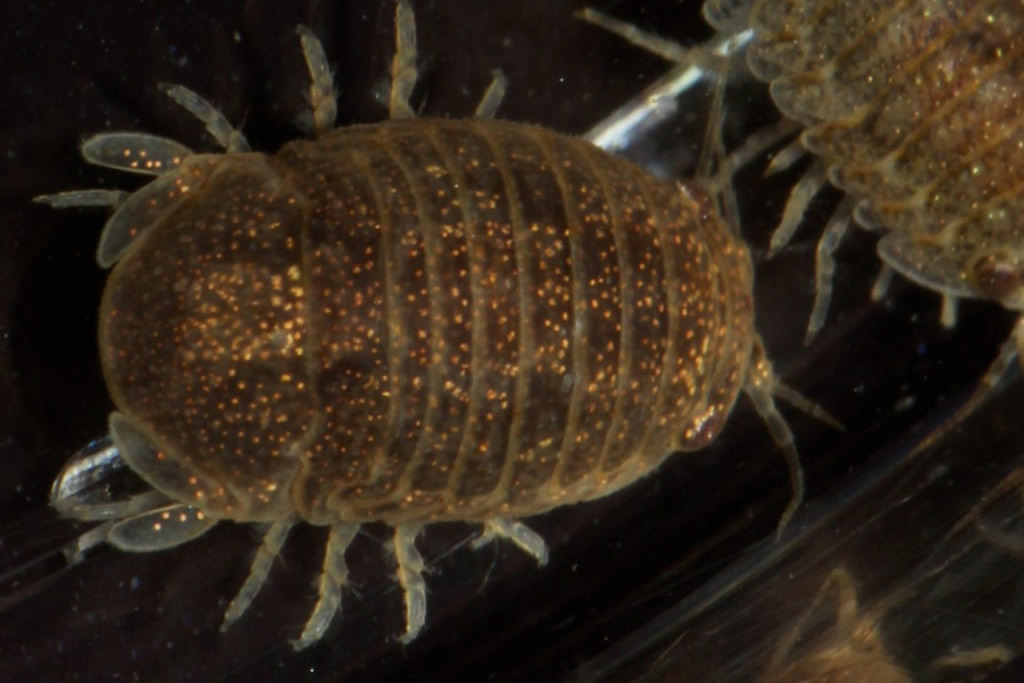Lekanesphaera monodi (Arcangeli, 1934)
Status:
Native
ID Difficulty
Identification
Members of the Lekanesphaera genus are pill isopods, the identification of which is somewhat more complicated than indicated in Naylor & Brandt (2015) and Hayward & Ryland (2017), not least because Naylor & Brandt do not include Lekanesphaera levii, whilst Hayward & Ryland leave out L. monodi. Although the patterning of tubercles on the pleotelson can be indicative of species, determination should be based on the patterning of setae on the first pereopod of mature specimens (Jacobs 1987).
The key identification features of L. monodi are:
- Pleotelson: may be smooth, granulated, or have twin rows of tubercles (especially on older males)
- Uropods: serrated
- Ischium of the first pereopod: 30-40 sparsely plumose setae (the end third of these is smooth)
- Merus of the first pereopod: 20-25 sparsely plumose setae (the end third of these is smooth)
- Propodus of the first pereopod: 1 or 2 distodorsal setae
Males are up to 12.0mm, females up to 8.0mm.
Distribution and Habitat
Occurs between MTL and LWN in rock crevices and under stones in estuaries or on shores with freshwater run off. The species is mostly found on south-eastern, southern and western British and east Irish coasts, with occasional records elsewhere.
References
Jacobs, B. J. M. 1987. A taxonomic review of the European, Mediterranean and NW. African species generally placed in Sphaeroma Bosc, 1802 (Isopoda: Flabellifera: Sphaeromatidae). Zoologische Verhandelingen 238, 3-71.
Naylor, E. & A. Brandt. 2015. Intertidal Marine Isopods. Synopses of the British Fauna (New Series), No. 3. Field Studies Council, for The Linnean Society of London.



